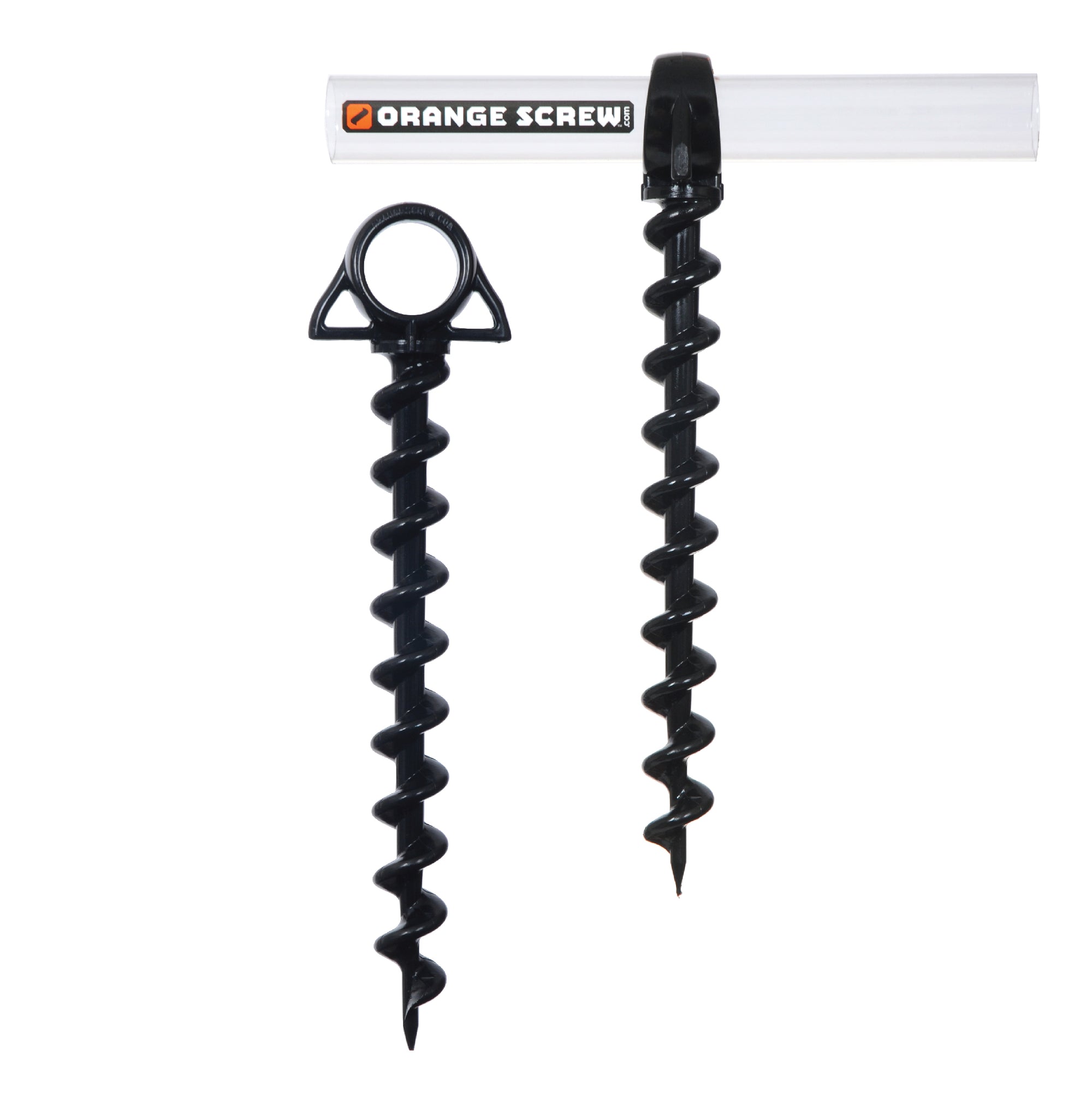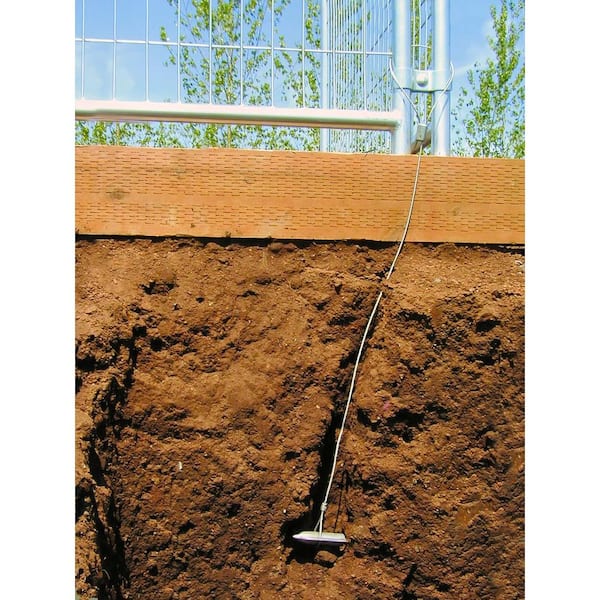Why You Should Use a Strong Ground Anchor for Enhanced Stability
Discover the Different Types of Ground Anchor for Your Following Project
From auger anchors, which excel in varied soil conditions, to risk anchors made for momentary setups, the alternatives are numerous. Furthermore, concrete and screw supports present unique advantages in details scenarios, while deadman anchors are tailored for applications requiring resistance to lateral pressures.

Auger Anchors
Auger supports are a popular option in various building and landscaping tasks because of their one-of-a-kind style and efficient securing abilities. These supports are composed of a helical screw-like shaft that is driven into the ground, enabling a steady and protected hold. The spiral layout facilitates very easy installation and makes the most of resistance against side pressures, making auger anchors particularly effective in applications such as fence, short-lived structures, and erosion control.
The setup process of auger anchors is reasonably uncomplicated. They can be by hand or mechanically mounted, relying on the size and called for depth. This flexibility enables for their usage in varied soil conditions, from sandy to clayey terrains. Auger supports can be conveniently removed and recycled, which includes to their cost-effectiveness and sustainability.
One of the significant benefits of auger anchors is their capacity to disperse loads evenly across the bordering dirt, minimizing the risk of dirt disturbance and lessening ecological influence. In addition, they are less prone to heaving or loosening up in time compared to traditional securing techniques. Subsequently, auger anchors are an excellent option for projects needing durable and reliable anchoring solutions.

Stake Anchors
When it pertains to safeguarding structures in a range of outdoor applications, stake supports supply a reputable and simple service. These anchors are usually built from long lasting products such as steel or aluminum, created to withstand environmental tensions while offering optimum stability. Their basic layout permits fast installation, making them a perfect option for short-term or long-term anchoring requirements.
Stake anchors are specifically beneficial in safeguarding tents, covers, and various other lightweight structures versus wind and weather. They work by being driven right into the ground at an angle, creating a solid hold that withstands pull-out pressures - Ground Anchor. The efficiency of risk anchors relies on several variables, including dirt type, moisture material, and the angle of installment
For included security, numerous risk anchors feature accessory factors for ropes or bands, permitting stress changes as essential. In applications such as landscaping or construction, they can successfully support equipment or structures on uneven surface. On the whole, stake anchors provide a economical and functional option for protecting numerous exterior installations, making them a preferred choice for professionals and do it yourself lovers alike.
Concrete Anchors
Concrete anchors give a robust solution for safeguarding frameworks to concrete surface areas, making sure security and safety in different applications. These supports are necessary for projects varying from property buildings to large commercial setups. They come in different types, consisting of development supports, glue anchors, and undercut supports, each created for particular load requirements and ecological problems.
Expansion anchors count on mechanical systems to grasp the concrete when set up. They are optimal for medium to durable applications. Adhesive anchors make use of high-strength epoxy or material to bond the anchor to the concrete, offering remarkable load-bearing abilities, especially in fractured concrete scenarios. Undercut supports develop a special form within the concrete, giving exceptional holding power, particularly in applications where tensile lots prevail.
Selecting the proper concrete support involves thinking about elements such as the weight of the load, the problem of the concrete, and ecological problems. Appropriate installment techniques are critical to guarantee ideal efficiency and integrity. When executed properly, concrete supports considerably boost the architectural you could try these out honesty of numerous jobs, making them essential in contemporary building practices. Understanding the particular requirements of your project will certainly help in choosing the appropriate sort of concrete anchor for the job.
Screw Anchors

Screw supports are a flexible securing remedy that can be effectively utilized in a range of applications where typical concrete supports may not be enough. These supports include a helical design that permits them to be conveniently driven right into the ground, making them excellent for use in dirt and other substratums. Their one-of-a-kind structure provides outstanding holding power and resistance to pull-out forces, making them appropriate for countless projects, from landscaping to architectural support.
Among the key advantages of screw supports is their convenience of installation. They call for very little equipment and can typically be set up without the demand for excavation, which conserves both time and labor expenses. In addition, screw supports can be gotten rid of and reused, supplying a sustainable remedy for short-lived applications.
Screw supports are especially advantageous in locations where soil conditions are challenging, such as sandy or loosened dirts. Their capacity to be set up at varying depths permits personalization based on certain project requirements. Generally, screw anchors provide a trustworthy and efficient anchoring technique, making them an excellent option for engineers and contractors looking for reliable services for their projects.
Deadman Anchors
Deadman additional resources supports function as a durable service for stabilizing structures in tough problems, especially where standard anchoring methods may fail. These supports contain big, hefty objects buried underground, which create resistance against lateral pressures. The design normally includes a view publisher site horizontal component, such as a block of concrete or a steel plate, hidden in the soil, to which bands or cable televisions are affixed.
The efficiency of deadman supports depends on their ability to disperse lots over a bigger location, decreasing the threat of failure in unpredictable dirt problems. They are particularly helpful in applications such as maintaining walls, temporary frameworks, and slope stablizing, where dirt motion can endanger the integrity of the structure.
Installment of deadman anchors calls for cautious planning to guarantee they are placed at the correct depth and orientation, optimizing their load-bearing capability. While they might call for even more labor and product than lightweight anchors, their reliability in negative problems makes them very useful for long-term projects. Deadman anchors are functional and can be adapted to different applications, making them a go-to choice for designers facing one-of-a-kind challenges in their projects.
Verdict
In recap, choosing the appropriate sort of ground anchor is crucial for making certain security and security in numerous projects. Auger anchors master varied soil conditions, while stake supports suit temporary applications. For concrete surfaces, development and glue anchors offer trustworthy alternatives, and screw anchors supply convenience in difficult terrains. Deadman anchors are specifically efficient in resisting side forces for preserving wall surfaces. Careful consideration of these options will improve task end results and architectural integrity.
Additionally, concrete and screw anchors present unique benefits in details scenarios, while deadman anchors are tailored for applications needing resistance to lateral pressures - Ground Anchor.Auger anchors are a preferred option in different building and landscaping jobs due to their special layout and reliable anchoring capabilities. They come in various kinds, including expansion anchors, adhesive supports, and undercut anchors, each developed for specific lots demands and environmental conditions
Adhesive anchors make use of high-strength epoxy or material to bond the anchor to the concrete, supplying remarkable load-bearing abilities, particularly in broken concrete situations. On the whole, screw supports offer a effective and trusted anchoring technique, making them a superb selection for contractors and designers looking for efficient remedies for their jobs.